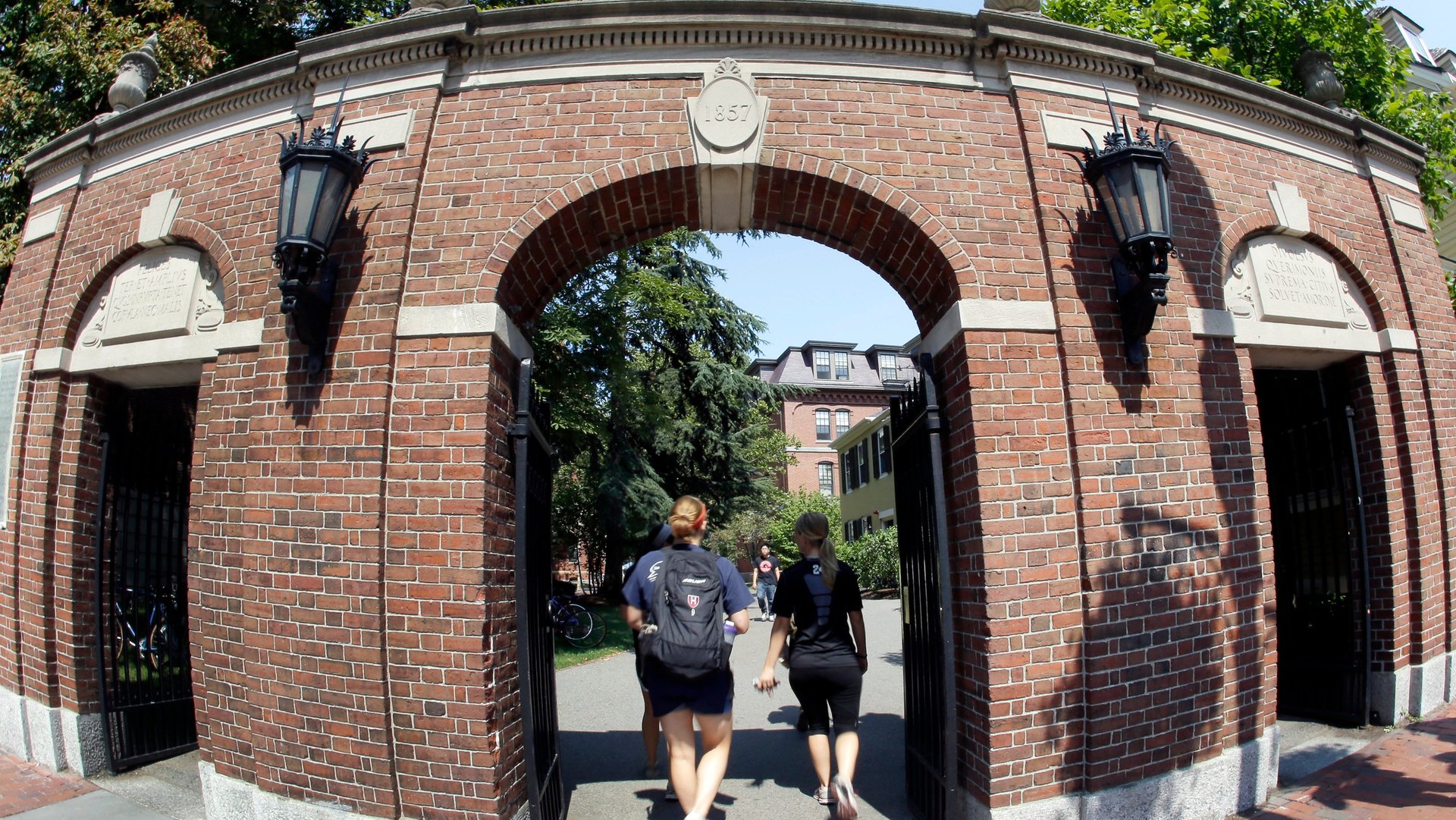Harvard had no choice but to kill its elite, male-only final clubs
“The university must act,” Harvard president Drew Faust declared in an email to the school’s community on Tuesday (Dec. 6). Her missive was effectively a death sentence for fraternities, sororities, and final clubs, the last of which have been known for centuries—and popularized in culture through works like 2010’s The Social Network—as some of the most elite institutions in higher education.


“The university must act,” Harvard president Drew Faust declared in an email to the school’s community on Tuesday (Dec. 6). Her missive was effectively a death sentence for fraternities, sororities, and final clubs, the last of which have been known for centuries—and popularized in culture through works like 2010’s The Social Network—as some of the most elite institutions in higher education.
From this year onwards, Harvard will bar members of unofficial single-gender social organizations from holding campus leadership positions or receiving formal endorsements for prestigious awards like the Rhodes Scholarship. On a campus of the high-achieving and highly ambitious—Harvard’s undergraduate acceptance rate this year was 5.2%—the disincentive is the equivalent of disassembling the groups directly.
The new rules are a response to years of mounting criticism about single-gender university social groups, and final clubs in particular: that they foster unhealthy environments of competition and exclusivity; that they encourage sexual violence; that they are age-old bastions of elitism that—in the same way certain symbols of slavery have been scrubbed from college campuses recently—cannot be championed alongside modern values.
Harvard’s decision, which attracted a fair amount of backlash when it was first weighed 18 months ago, is also almost certainly a nod to today’s fragile social climate. Donald Trump’s polarization of the country is at its peak. Identity politics reign. The Harvey Weinstein watershed moment, which broke open unprecedented conversations on sexual misconduct, is far from its conclusion. To put an end to elite, male-only social groups is to announce that the school is on the side of some sort of progress, however amorphous that is.
Yet Harvard is also beholden to its (generously) wealthy alumni base—an older demographic unlikely to respond well to cherished social institutions being punished instead of revered. One can see that equivocation in the somewhat opaque language of Faust’s email, which was sent to current students, alumni, and faculty:
The final clubs in particular are a product of another era, a time when Harvard’s student body was all male, culturally homogeneous, and overwhelmingly white and affluent. Our student body today is significantly different […] While we should respect tradition, it is incumbent on us to organize the institution for the benefit of our current students and those who will follow […]
We cannot ignore the responsibility we bear in relationship to our students’ experience in these settings and their effect on the broader community. These organizations are very much of Harvard: They are effectively on our campus, consist exclusively of Harvard students and graduates, and directly influence the character of undergraduate life. More importantly, in their current incarnation, they stand in the way of our ability to provide a fully challenging and inclusive educational experience to the diverse students currently on our campus.
Higher education is normally slow to change, preferring caution to provocation. From the outside, Harvard’s decision perhaps seems sudden, outsized—but taking into account the past several years in news, both on campus and beyond, it’s been a while coming.